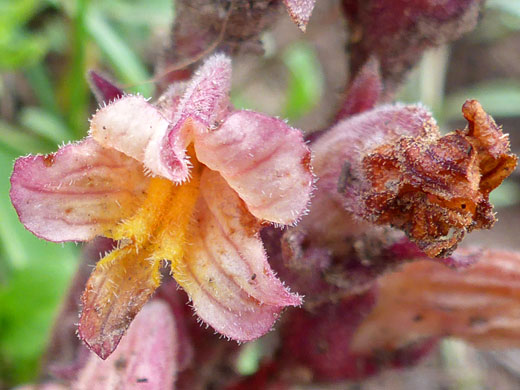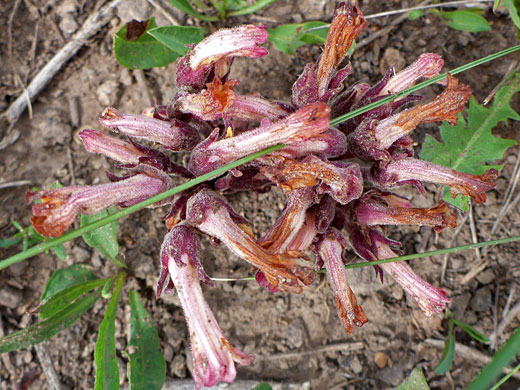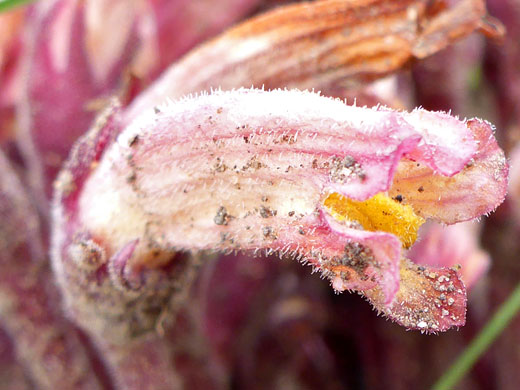Orobanche Fasciculata, Clustered Broomrape
Plants > Wildflowers > Orobanchaceae > Orobanche Fasciculata
Common names:
Clustered broomrape, bundled broomrape
Family:
Scientific name:
Orobanche fasciculata
Synonym:
Aphyllon fasciculatum
Main flower color:
Range:
All the western states, though rare in Texas, Oklahoma and Kansas
Height:
Up to 8 inches
Habitat:
Dry grassland, open woodland, from near sea level to 10,000 feet
Leaves:
None
Season:
April to August
Orobanche fasciculata is a common and widespread species, easily recognizable from its clustered appearance, with up to 20 flowers in a dense group. Like all members of this genus, plants are parasitic, and lack leaves; hosts for this species include sagebrush and saltbush. Flowers are attached by relatively long pedicels, up to six inches, lacking any bractlets; they arise from the short (up to 2 inches) stem, which is entirely or mostly underground, so they may have the appearance of separate plants.
Plants are glandular-hairy, including inner and outer surfaces of the corolla. The purple calyx is divided a little less than half its height into five triangular lobes, pointed at the tip. The corolla, around one inch long, is pinkish-purple to yellow in color, with five short, rounded lobes at the tip. Along the floor of the corolla are two hairy yellow nectar guides.
Plants are glandular-hairy, including inner and outer surfaces of the corolla. The purple calyx is divided a little less than half its height into five triangular lobes, pointed at the tip. The corolla, around one inch long, is pinkish-purple to yellow in color, with five short, rounded lobes at the tip. Along the floor of the corolla are two hairy yellow nectar guides.
All Contents © Copyright The American Southwest | Comments and Questions | Contribute | Site Map




